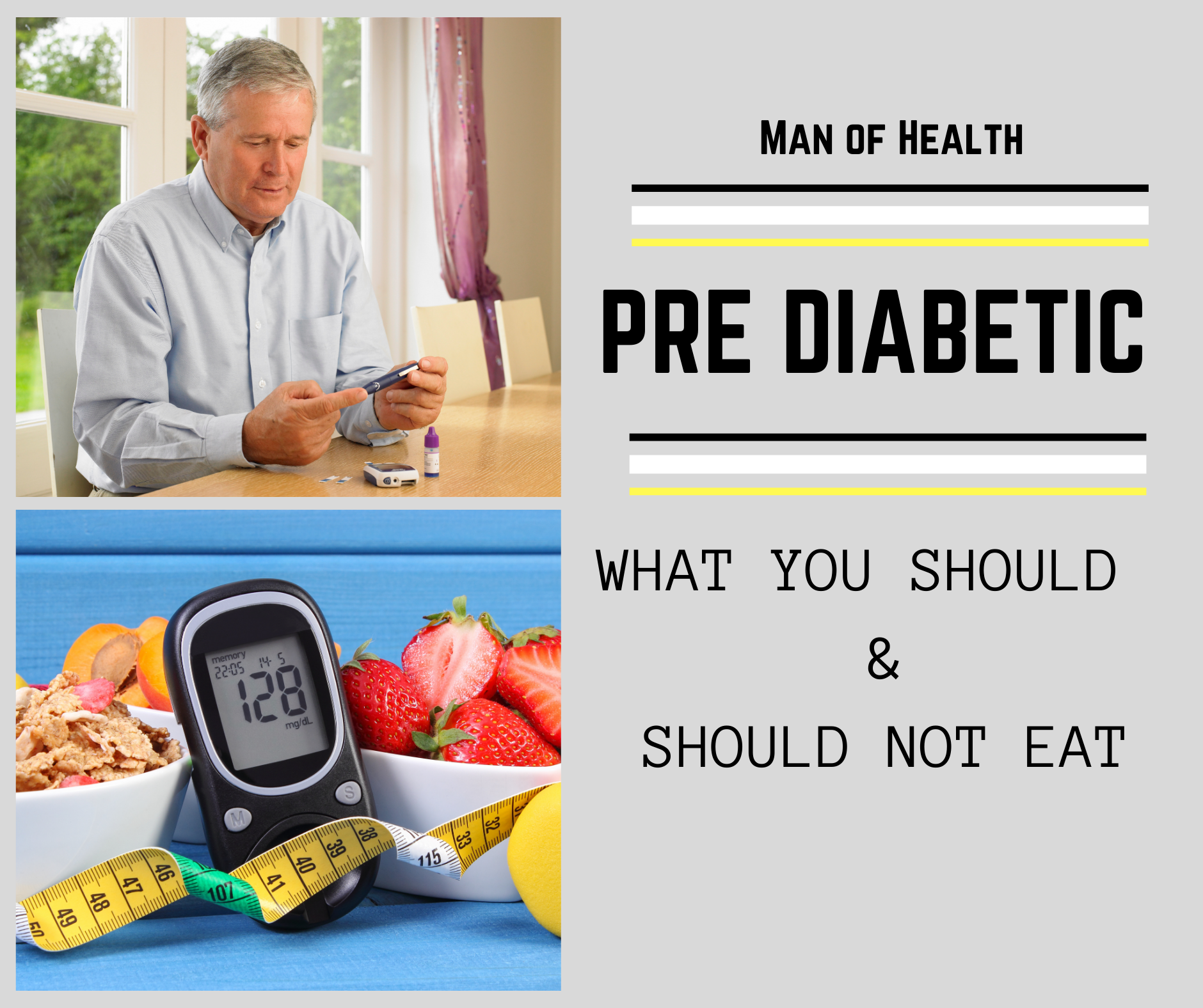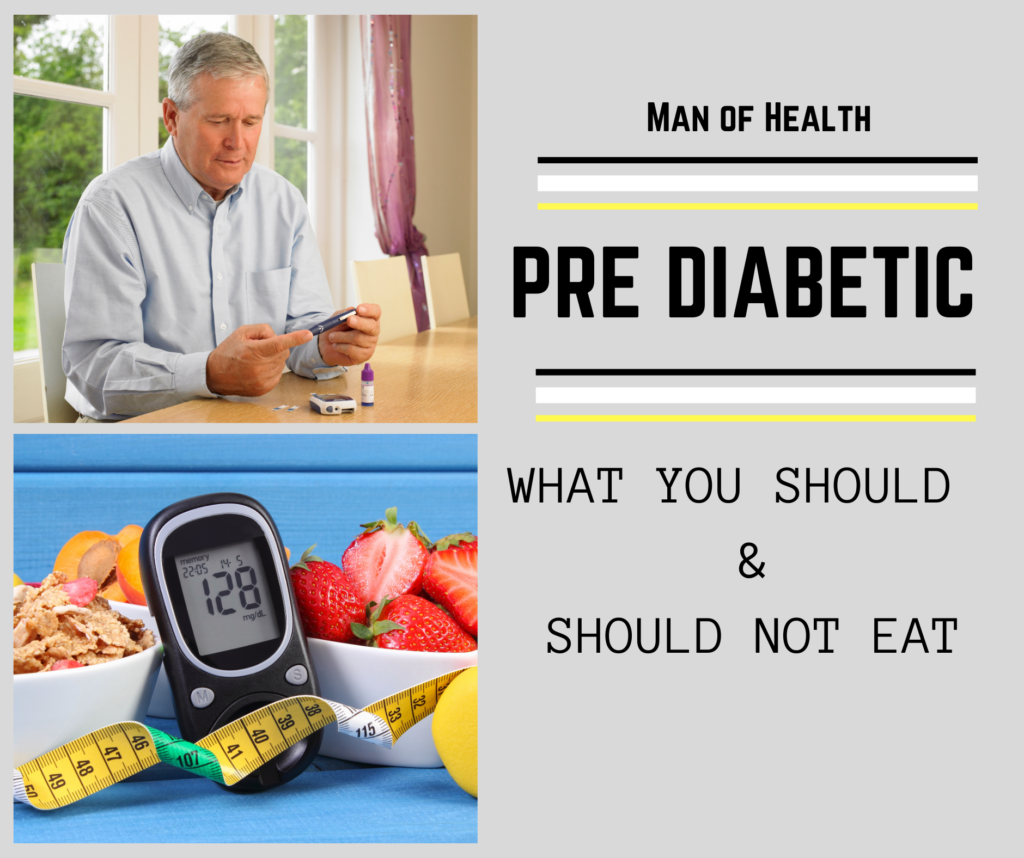
Pre Diabetic Diet: What you should and should not eat?
- Post author:Christopher C
- Post published:November 18, 2020
- Post category:Physical Health

Diabetes in my personal opinion is one of the most dangerous chronic diseases.
There are two types of diabetes:
Type 1, which was once known as juvenile diabetes because it occurred frequently in young people. Type 1 diabetics usually lack any insulin production from their pancreas, so they must get their insulin from an outside source.
Type 2 diabetes in which diet plays an important role in. Type 2 diabetics have insulin resistance so their body does not respond to the insulin that is made. Type 2 diabetics may eventually lose the ability to produce insulin.
Diabetic Rundown
Ok I’m going to give you a quick rundown of diabetes: symptoms, labs, and treatments.
The symptoms of diabetes are:
Peeing a lot
Thirst and drinking a lot of water
Fatigue
Blurry vision
Feeling hungry
Wounds that do not heal well
Labs
You can be diagnosed with diabetes if you have:
random blood sugar greater that 200.
If your A1C is greater than 6.5
Fasting glucose level greater than 126 on two occasions
Medications:
Your provider can treat you with oral medications, injectables, and insulin. They may decide to do a combination of all of them
Ok now that we have some background information let’s discuss diets.
Pre Diabetic Diets: What you should and should not eat?
Pre-diabetic: A pre-diabetic is someone whose A1C falls between 5.7-6.4. These individuals are not yet diabetics but they are training to become one. The goal for you if your pre-diabetic is to never cross the line of diabetic.
Glycemic Index
The key to pre-diabetics is the glycemic index. This tool let’s you know what foods raise your blood sugars. The goal is to avoid these foods and substitute them with a healthier option.
Foods with a high glycemic index (foods that should be avoided) are: processed and refined carbs: white bread, russet potatoes, white rice, soda, juice. These foods should be avoided to keep your sugar from shooting up.
Foods with a medium glycemic index. These foods are ok to eat. They are not the best but should be used as a substitute for high glycemic foods if you can’t avoid them. These foods include whole wheat and brown rice.
Foods with a low glycemic index are the best choice for pre-diabetics. These include steel cut oats, stone ground whole wheat bread, carrots and greens, corn l, sweet potatoes, whole wheat pasta.
High Glycemic Index: values above 70
Medium Glycemic Index: values between 56-69
Low Glycemic Index: values below 55.
Remember the goal is low and medium is ok on occasion.
A great glycemic index app is:
Android https://play.google.com/store/apps/details?id=com.creamsoft.mygi
Iphone:
Apps.apple.com/us/app/glycemic-index-load-net-carbs/id1087424868
Portion Size:
Moderation is a major aspect of a pre-diabetic’s diet. In the US our portion Size is usually double of other countries. It is important to always read the nutritional label to determine appropriate portions Size.
Restricting carbs is not necessary. It can be hard for people to restrict carbs so for pre-diabetics I like to say substitute. The recommendation is to have 45-65 percent of dietary intake coming from a carb source.
Fiber, lean meats, cutting down on alcohol.
Fiber has benefits to the body and one of them is helping with pre-diabetes. Fiber-rich foods stop you from over eating because you feel full longer.
Foods that are high in fiber are: beans, fruits and vegetables (the ones with edible skin), and whole grains.
Eating lean meats. Meats do not contain carbs but they do contain fat. Make sure that you do not trade pre-diabetes for a high cholesterol. Make sure to avoid fatty meats. Choose a protein that is lean.
Moderation is the key when it comes to all good intake but it’s also important when it comes to alcohol intake. Men should limit their alcohol intake to only 2 drinks per day. Remember alcohol contains carbs in the form of sugar. The average drink should be 12 oz for a beer, 5 oz for wine, 1.5 oz for hard liquor.
Remember when you are a pre-diabetic you are borderline diabetics. Your goal should be to avoid becoming a diabetic. Avoiding diabetes can save your life and your wallet. The key to it all is choosing foods low in the glycemic index, moderation, high fiber foods, lean meat, and moderation with your alcohol consumption.
Sign up for Man of Health Newsletter to receive exclusive content and Freebies.

Share via:


